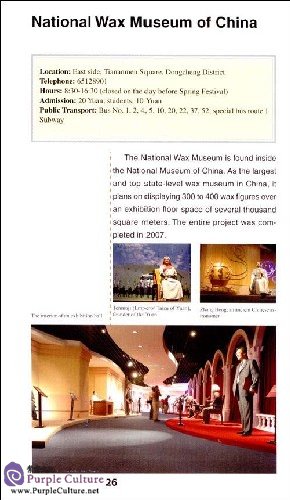Sample Pages Preview

 Preface
PrefaceA museum is a palace of culture. As the finest testimony to glorious civilization and heritage, a museum preserves and displays the cultural inheritance and objective evidence of human environments. If the quantity and quality of museums in a city serves to provide a general indication of its cultural essence, then the city of Beijing should hold first place in China in this aspect.
The fertile cultural soil of Beijing comes from its illustrious history. Over many ages from about 460,000 years ago, Beijing grew from a primitive settlement into a sizable city, from being but one of many political centers in northern China, to becoming the capital of a unified feudal dynasty, until it became the capital of the People's Republic of China. Today, Beijing is an ever-expanding international cosmopolis. As the ancient capital of six imperial dynasties, Beijing has enjoyed an uninterrupted history of over 3,000 years since its formation during the ancient Van and Ji kingdoms. A city with such a long history is rare in the world. The cultural antiques and historical artifacts bestowed by each era were passed down from one generation to the next onto the ancient land of Beijing like mighty waves adding glistening sands to a beach, turning the city of Beijing into a grand museum itself. According to statistical data, there are as many as over 130 officially registered museums in Beijing, preserving today more than 3.2 million artifacts in total.

